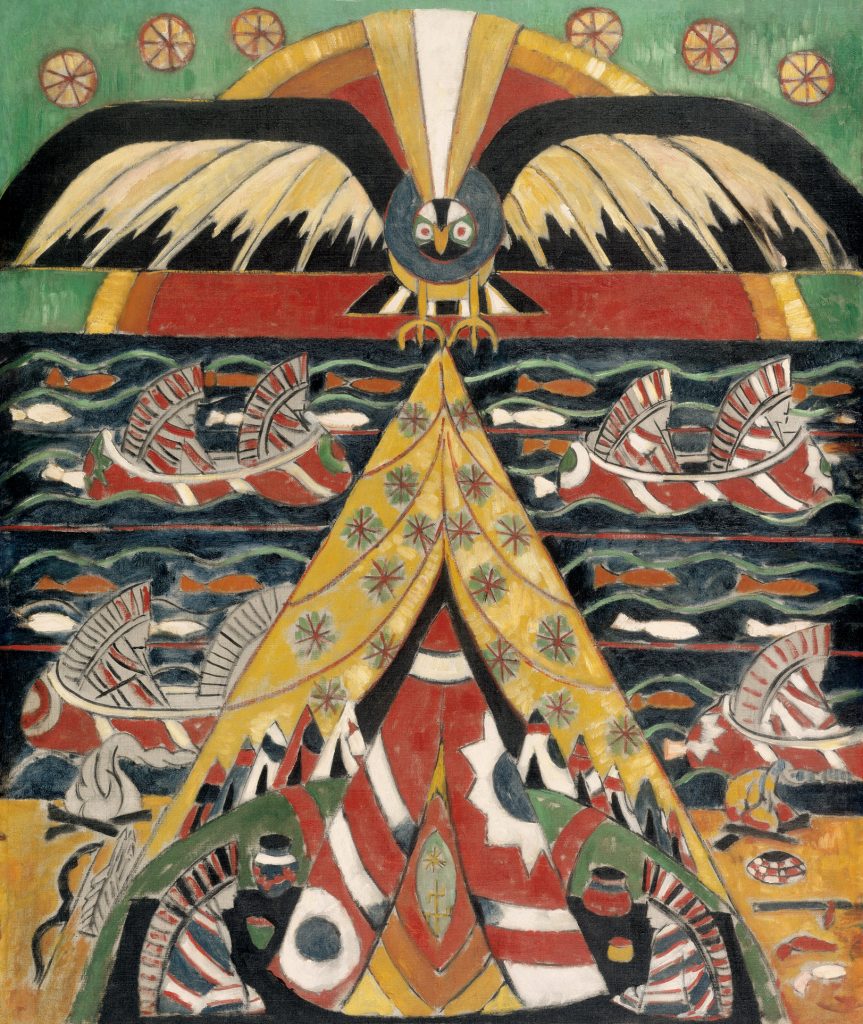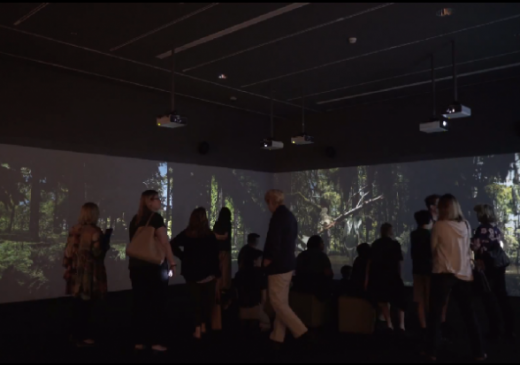John James Audubon (artist)
John James Audubon was a largely self-taught arist-naturalist whose intent was clearly scientific. His...
view artistStudents will create two-dimensional patterns in black ink and then paint within those patterns. The students may choose to draw wavy, squiggly or other types of lines for their patterns. The lesson will also focus on the process of painting and the routines of cleaning up after a painting activity.

Indian Fantasy, by Marsden Hartley
Introduction/ Warm-Up
Focus Activity Procedure
*Note: The paper can be oriented either horizontally or vertically for this project.
Closing
Extension Activities for Teachers
Extension Activities for Families
Written by Andrea Saenz Williams
Vocabulary
Native American
nature
Materials
11 x 15” sheets watercolor paper
nontoxic Sharpie markers
nontoxic tempera cakes
paintbrushes
cups for water
paper towels
Suggested Books for Classroom Library
Brocket, Jane. Spotty, Stripy, Swirly: What Are Patterns? Millbrook, 2012. [ISBN 978-0-7613-4613-5]
Bryan, Ashley. Beautiful Blackbird. Simon/Atheneum, 2003. [ISBN 978-0-689-84731-8]
Chocolate, Deborah M. Newton. Kente Colors. Illustrations by John Ward. Walker, 1997. [ISBN 978-1-41312-866-6]
Ehlert, Lois. Feathers for Lunch. Harcourt, 1990. [ISBN 978-0-15-230550-5]
Ehlert, Lois. Lots of Spots. Simon/Beach Lane, 2010. [ISBN 973-1-44240-289-8]
Kuskowski, Alex. Super Simple African Art: Fun and Easy Art from around the World. ABDO, 2012. [ISBN 973-1-61783-210-9]
Morris, Ann. Hats, Hats, Hats. Photographs by Ken Heyman. Lothrop, 1989. [ISBN 978-0-688-06338-2]
Pluckrose, Henry Arthur. Pattern. Childrens Press, 1995, 1994. [ISBN 973-0-329-56924-2]
Swinburne, Stephen R. Lots and Lots of Zebra Stripes: Patterns in Nature. Boyds Mills, 2001, 1998. [ISBN 978-0-329-59955-3]
John James Audubon was a largely self-taught arist-naturalist whose intent was clearly scientific. His...
view artistLiving as an expatriate in Berlin prompted Marsden Hartley to reflect upon his native country and his own...
view artistCatch Audubon’s birds come to life through an immersive experience developed by OLO creative farm February-...
view story